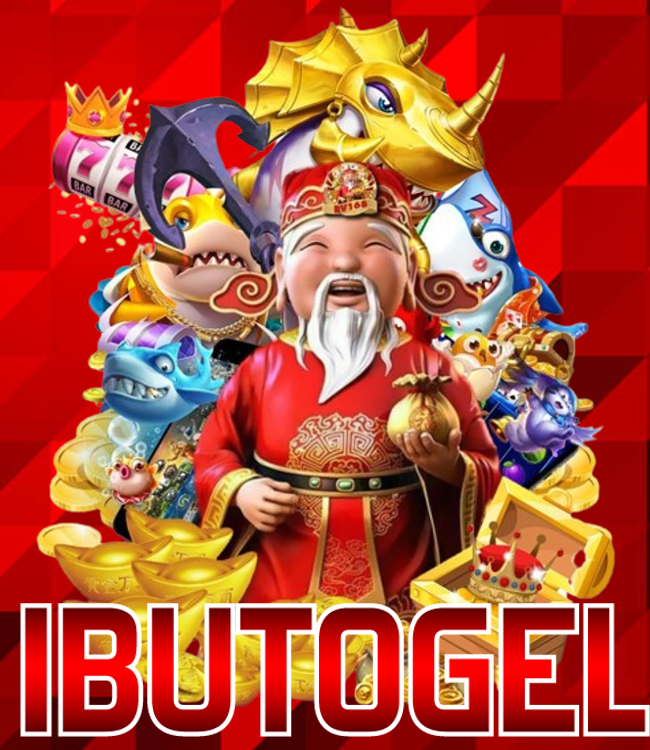LINK SERVER SENSASIONAL
Link Slot Thailand: Situs Slot Gacor Server Thailand Dan Link Server Sensasional Jamin Jackpot
Link Slot Thailand: Situs Slot Gacor Server Thailand Dan Link Server Sensasional Jamin Jackpot
Couldn't load pickup availability
Link Slot Thailand: Situs Slot Gacor Server Thailand Dan Link Server Sensasional Jamin Jackpot
Link Slot Thailand menjadi pilihan terbaik bagi para pecinta slot online yang ingin merasakan sensasi bermain dengan server terbaik. Dengan fitur-fitur unggulan dan link server sensasional, kesempatan untuk memenangkan jackpot besar semakin nyata. Mari simak informasi lengkapnya di artikel ini!
Link Slot Thailand Menjadi Terobosan Terbaru Dalam Mencoba Link Server Sensasional Auto Jackpot
Link Slot Thailand adalah terobosan baru yang menggebrak dunia permainan slot online. Dengan menyediakan link server sensasional, pengalaman bermain menjadi lebih seru dan menarik. Auto jackpot membuat setiap putaran game penuh dengan potensi kemenangan besar. Kemudahan akses melalui link Slot Thailand memastikan para pemain dapat langsung merasakan kegembiraan tanpa hambatan. Tidak perlu khawatir akan gangguan teknis atau lagging saat bermain, karena server yang digunakan telah terbukti stabil dan handal. Dengan fitur auto jackpot, kesempatan untuk meraih hadiah-hadiah fantastis semakin dekat. Para pemain dapat menikmati sensasi adrenalin ketika simbol-simbol jackpot mulai muncul di layar mereka. Link Slot Thailand benar-benar memberikan pengalaman bermain yang tak tertandingi. Jadi, jangan lewatkan kesempatan untuk mencoba link server sensasional ini dan rasakan sendiri keuntungan serta keseruan dalam setiap putaran game slot online!
Keunggulan Dalam Mencoba Situs Slot Server Thailand Untuk Bermain Game Slot Tergacor Hari Ini
Keunggulan dalam mencoba situs slot server Thailand adalah pengalaman bermain yang tak tertandingi. Dengan teknologi canggih dan sistem keamanan terbaik, Anda dapat menikmati game slot gacor dengan nyaman dan aman. Server Thailand juga dikenal akan jackpot besar yang bisa diraih setiap harinya. Selain itu, situs slot server Thailand menawarkan berbagai macam pilihan permainan slot yang seru dan menghibur. Mulai dari tema klasik hingga modern, ada sesuatu untuk semua orang di sini. Selain itu, fitur akun pro Thailand memudahkan para pemain untuk mengakses promo-promo menarik serta bonus-bonus menggiurkan. Dengan bergabung bersama situs slot server Thailand, Anda juga bisa merasakan sensasi bermain melalui link server sensasional yang selalu memberikan kesempatan untuk mendapatkan jackpot maksimal. Jadi jangan ragu lagi untuk mencoba keberuntungan Anda hari ini di LINK SERVER SENSASIONAL!
Slot Thailand Menyediakan Fitur Akun Pro Thailand Dan Link Server Sensasional Bagi Slotmania
Slot Thailand menjadi pilihan terbaik bagi para penggemar slot online yang mencari pengalaman bermain yang seru dan menguntungkan. Dengan fitur unggulan seperti Akun Pro Thailand, pemain dapat menikmati keuntungan eksklusif serta akses ke link server sensasional untuk meningkatkan peluang meraih jackpot. Dengan memiliki Akun Pro Thailand, para Slotmania dapat menikmati berbagai keistimewaan mulai dari bonus eksklusif hingga layanan customer service yang responsif dan profesional. Fitur ini memastikan pengalaman bermain yang lancar dan menyenangkan tanpa kendala. Selain itu, link server sensasional di LINK SERVER SENSASIONAL memungkinkan pemain untuk terhubung dengan jaringan permainan yang luas sehingga kesempatan mendapatkan jackpot besar semakin terbuka lebar. Dengan begitu, para Slotmania bisa menjelajahi beragam game slot seru dan menantang dengan peluang kemenangan maksimal setiap harinya. Tak heran jika banyak pemain slot online memilih Slot Thailand sebagai tempat untuk meraih kesuksesan dalam permainan favorit mereka. Jadi, jangan lewatkan kesempatan emas ini dan bergabunglah sekarang juga!
Gunakan Akun Pro Slot Thailand Dan Raih Jackpot Maxwin Hingga Jutaan Setiap Harinya
Saatnya mengambil langkah besar dalam permainan slot online dengan menggunakan akun Pro Slot Thailand! Dengan fitur yang disediakan, kamu bisa lebih mudah meraih jackpot Maxwin setiap harinya. Dibandingkan dengan akun reguler, Akun Pro Thailand memberikan keuntungan yang lebih tinggi dan peluang menang yang fantastis. Jangan ragu untuk mencoba dan buktikan sendiri kemenangan besar yang bisa diraih. Dengan berbagai game slot terbaik dari server Thailand, kesempatan memenangkan jutaan rupiah tiap harinya semakin dekat. Jadilah pemain handal dan manfaatkan semua fitur unggulan yang tersedia untuk meraih kemenangan besar. Tidak ada alasan untuk melewatkan kesempatan emas ini. Gunakan sekarang juga akun Pro Slot Thailandmu dan raih jackpot Maxwin hingga jutaan setiap harinya! Bermainlah dengan percaya diri dan yakin bahwa keberuntungan selalu ada di pihakmu.
Link Server Sensasional Dalam Situs Slot Server Thailand Terbaik Saat Ini
Link Server Sensasional dalam situs slot server Thailand terbaik saat ini menjadi daya tarik utama bagi para penggemar judi slot online. Dengan fitur unggulan yang ditawarkan, pemain dapat merasakan pengalaman bermain yang lebih seru dan menegangkan. Dibandingkan dengan situs lainnya, link server sensasional pada LINK SERVER SENSASIONAL memberikan keuntungan lebih kepada para pemain. Jackpot besar dan bonus menarik siap menghiasi perjalanan bermain Anda setiap harinya. Tingkat kemenangan yang tinggi serta kesempatan untuk memenangkan jackpot maxwin hingga jutaan rupiah menjadikan link server sensasional di LINK SERVER SENSASIONAL sebagai pilihan utama bagi para slotmania yang haus akan tantangan baru. Selalu update dengan teknologi canggih, link server sensasional dalam LINK SERVER SENSASIONAL tidak hanya memberikan akses mudah namun juga keamanan data yang terjamin. Bermain tanpa khawatir tentang privasi Anda adalah prioritas utama dari penyedia layanan tersebut. Jadi, jangan ragu lagi untuk mencoba keberuntungan Anda di situs slot server Thailand terbaik saat ini. Ayo bergabung sekarang juga dan rasakan sensasi bermain judi slot online secara maksimal!
Jangan Lewatkan Kesempatan Bermain Slot Tergacor Hari ini Menggunakan Link Slot Thailand Dan Akun Pro Thailand Link Server Sensasional
Dengan begitu banyak keuntungan dan fitur menarik yang ditawarkan oleh Slot Thailand, tidak ada alasan untuk melewatkan kesempatan bermain game slot tergacor hari ini. Gunakan Link Slot Thailand dan Akun Pro Thailand di link server sensasional untuk meraih jackpot maksimal hingga jutaan setiap harinya. Jadi, segera bergabunglah sekarang juga dan nikmati pengalaman bermain slot online yang seru dan menguntungkan!
LINK SERVER SENSASIONAL


